Photographs: A Ganesh Nadar A Ganesh Nadar in Madurai
If you go from Madurai to Melur, you just cannot miss Yaanaimalai. It is a squat, long block of granite. What catches your eye is the lack of vegetation on it, and its resemblance to a behemoth. From an angle it looks like a sleeping elephant, and yaanai in Tamil is elephant.
Yaanaimalai is about 1.5 km long and a km wide. Add a height of about 200 meters at its highest point, and you get granite worth Rs 25,000 crores -- at a rough estimate. No one knows how deep the granite layer is.
The issue in Yaanaimalai is about greed and misuse of power for personal gain. So far the political parties in Tamil Nadu, whoever they may be, have stuck to desilting rivers to make money, some have even dredged the ocean for money, and now they plan to destroy a hill for money.
And how do they propose to do this?
..
Photographs: A Ganesh Nadar
God vs pure granite
Image: The only reason for excavating Yaanaimalai is to sell the graniteThe issue came into the limelight by an order of the Tamil Nadu art department (a copy of which is available with this correspondent) dated December 30, 2009, which tersely says, 'The single rock in Othakadai village to be drilled to create a sculpture town, this notice is to set up a committee to explore the viability of creating a sculpture town.'
The order explains that a sculptor from Thanjavur district has offered to turn the single block rock into a sculpture town, and came to light when a Tamil daily wrote about it on February 1, 2010. After which all hell broke loose.
There are about 40 villages around Yaanaimalai and the locals realised immediately that under the guise of creating a sculpture town, their hill was going to be excavated.
And the only reason for excavating the hill is to sell the granite.
The villagers are opposing the idea, because for them Yaanaimali is their principal deity.
Where ancient myths still flourish
Image: The stone-cut staircase near the cave temple in YaanaimalaiSo, on one side we have religious beliefs, and on the other side political greed.
On top of the hill, carved out of rock, is a flat platform, with tablets in Brahmi script lying around. Villagers say saints meditate here.
The hill must be a little over 500 feet high, and on one side at a height of about 100 feet is a cave temple. We managed to go up the stonecut staircase, which was very steep. The Archaeological Survey of India has put up a barbed wire around it, and a gate with lock. Villagers stretched the barbed wire apart, so one can squeeze in.
The steps to this cave temple are of solid granite.
Legend says the Chola king (of Thanjavur) could not win the battle against the Pandya ruler (from Madurai) and sought the help of Jain saints who were meditating here.
The saints created a giant elephant using their mystic powers and directed it to kill the Pandya king and destroy his capital. The latter prayed to Lord Shiva who gave him the `Narasinga Asthram,' which turned the elephant into a hill
Yaanaimalai is that elephant, believe the villagers, and point to the that a sculptor from Thanjavur is all set to bring down the hill.
From the cave temple you can see another temple at the bottom, and villagers said this is for Narasinga who turned the elephant to stone.
'Why should we vacate the land of our forefathers?'
Image: A notice about the antiquity of the hillThe villagers pray to this mountain, name their children after it, for instance 'Yaanaimalayan', and refuse to wear slippers when they climb the hill.
There are more than 40 villages around the hill with a total population of around 50,000.
Young boys said that every villager is united against the government on the Yaanaimalai issue. "They know this is an ancient religious spot. The ASI has already acknowledged it but still they have taken over it. How can the state government suddenly start drilling in a property that belongs to the ASI?"
An old man added, "They are smart, a few months back they told us we will give you free land elsewhere, why don't you move?"
"Are we fools? Why should we vacate the land of our forefathers? We have been living here for generations. Suddenly they have discovered that we are living on ASI land and that we are encroachers. The ASI is the encroacher, it came here in my lifetime," he said angrily.
When the protests first broke out, the government denied issuing any notice.
The Communist Party of India's town secretary N Kumarasen had a copy of the government notice no. 227/2009 with him. "We have copies of this notice and they have the temerity to say no notice was issued," he said.Fast unto death for Yaanaimalai
Image: Inside the cave temples in YaanaimalaiThe local member of the legislative assembly Alaguarasi is also a state minister. The local member of Parliament is none other than M K Alagiri, Cabinet minister in the central government and son of Chief Minister M Karunanidhi. Surprisingly, both of them have so far not commented on this issue.
After black flag demonstrations were staged, the police refused permission for any form of protest. But the villagers decided to continue their protests, whichever way.
So on the night of February 21, just after midnight, 150 villagers went up the hill from three different paths. Once they reached the top at 4.30 am, the protesters put up posters across the town announcing the fast unto death on the hill top.
The tahsildhar was the first government official to come to the spot but the villagers refused to end their fast. He phoned the district revenue officer and they decided to send the cops up to get the villagers down. The protestors retaliated with, "If we see the cops climbing up, we will jump down."
Order which was 'never issued' is taken back
Image: The temples surrounding YaanaimalaiThe cops did not go up, and the protesters refused to yield until they had a written assurance from the government. After much dilly-dallying, the collector said he would give his reply in the form of a press release.
The press release signed by the acting collector Dinesh Ponraj said, 'In the light of the ongoing agitation by the Othakadai and surrounding villages, the district collectorate will make efforts to cancel the notice and inform the government accordingly' (a copy of the release is with this correspondent).
"How can the collector recommend withdrawal of a notice which the government says it never issued?" ask the villagers in unison.
Beyond Madurai's external boundaries lie three mountains: Yaanaimalai (elephant mountain), Nagamalai (snake mountain) and Pasumalai (cow mountain). Now one of them is under onslaught because of its rich hoard of granite. Will the exploiters win the day or will the villagers stand firm? Only time will tell.

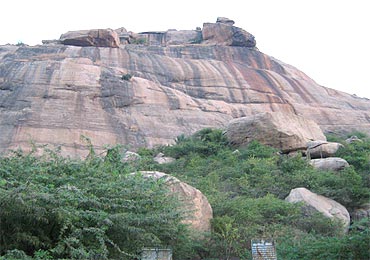
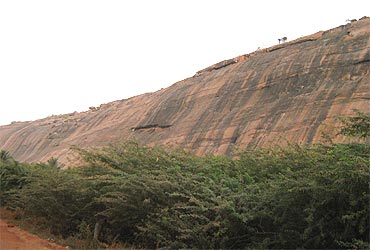

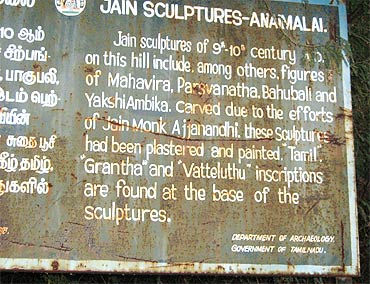
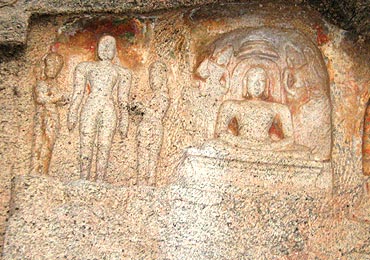
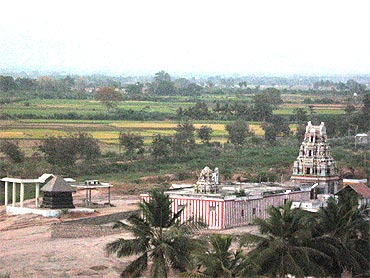
article